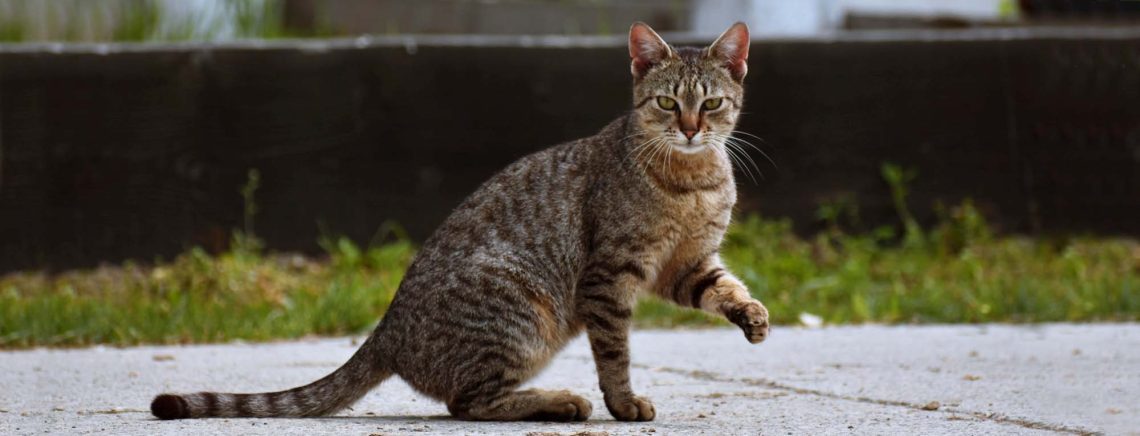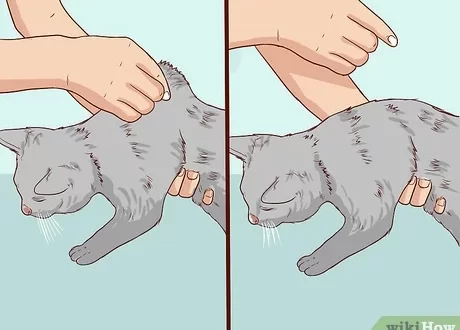
Why a cat is lame and how to help her
If a cat is lame on its paw, it may have problems with its pads, muscles, or joints. Unfortunately, she can’t meow exactly where it hurts. Lameness in a cat can be caused by a variety of reasons. What should be paid attention to and how to alleviate the suffering of a pet?
Contents
Common Causes of Lameness in Cats
Sometimes an animal is lame simply because of a domestic accident. Perhaps something is stuck in his paw pad or he pulled a muscle. You need to wait until the cat is calm and settles down comfortably, and then examine its paw. She should be checked for noticeable swelling, redness, or signs of pain, such as meowing or flinching when the injured area is touched.
For example, according to Wag!, a cat with an ingrown claw may constantly lick that paw or try not to step on it when walking. Even if there are no swelling on the paws and the animal is generally behaving normally, a slight lameness may be a reason to visit a veterinarian to prevent infection.
One of the most common causes of paw injuries in furry beauties is feline high altitude syndrome, according to the New York Animal Medical Center. A naturally curious cat can easily jump out of an open window and fall down. It is necessary to install strong screens on the windows and never leave the windows open when no one is at home.
In older cats or small kittens, even jumping off a high bookshelf can lead to injury. Therefore, it is better to always know where the pet can climb.
Another problem why a cat is lame on its paw may be arthritis. An elderly pet who has difficulty walking, no longer jumps on or off the couch, or suddenly becomes withdrawn, may be suffering from joint pain. Your veterinarian may recommend changing your cat’s food to a special food to promote joint health and equipping her with a new corner to sleep in a warm place at a lower level.
If the situation does not improve within a day, you should contact your veterinarian to determine the cause of lameness. This will help avoid long-term negative consequences. Cats are great at hiding their pain, so if the owner notices symptoms, it’s probably already quite advanced, so the pet should be examined by a veterinarian. He may also take x-rays to determine the cause of the injury.
The cat began to limp: a visit to the veterinarian
If your cat is in pain, getting her into a carrier for a trip to the vet can be even more difficult than usual. To make your trip as stress-free as possible, here are a few tips to keep in mind:
- Place a blanket or shirt inside the carrier that your cat likes to lie on. So, she can be calmed by a thing that smells like the owner. You can spray the carrier with catnip or put some treats and one of your pet’s favorite soft toys in it.
- If the cat is not going to climb into the carrier on its own, you should handle it carefully and do not force it into it. You can wrap her in a blanket that will give her a sense of warmth and security, and only then place her in a carrier.
The cat began to limp: when to worry
Unfortunately, some cat paw injuries take time to heal. For example, anterior cruciate ligament (ACL) tears, which are common in athletes, also occur in cats. The Atlantic Veterinary Hospital notes that ACL tears in pets usually result from jumping or falling from heights and are more common in overweight pets. To find out if the injury requires surgery, pain medication or other treatment, you should contact your veterinarian.
If a cat is lame on its paw due to an injury or a serious illness, it is very important to limit its movements and not allow it to jump or run. You can temporarily borrow a large dog cage and keep the cat in it while it recovers. But you need to make sure that the cage is large enough so that the cat has room to walk between a small tray, a bowl of water and a bedding or blanket. You can give her a separate room in the house away from other pets and children.
In any case, you need to make sure that the sides of her tray are low enough so that she can get in and out of it without much effort. A shallow or small kitten litter box will save the animal from further injury and help prevent accidents outside the litter box that can occur because it is painful for a cat to climb into it.
It is important to remember that the pet can only be given painkillers prescribed by a veterinarian. Over-the-counter medicines for humans can be toxic to cats and can make things worse.
Regardless of the seriousness of the reason why the cat falls on its paw, it is important to give it full attention and try to keep it calm and relaxed. Extra caresses and a few special treats will make your pet’s recovery easier.
See also:
Why cats kick with their hind legs How to care for cat paw pads 10 tips for keeping older cats healthy





